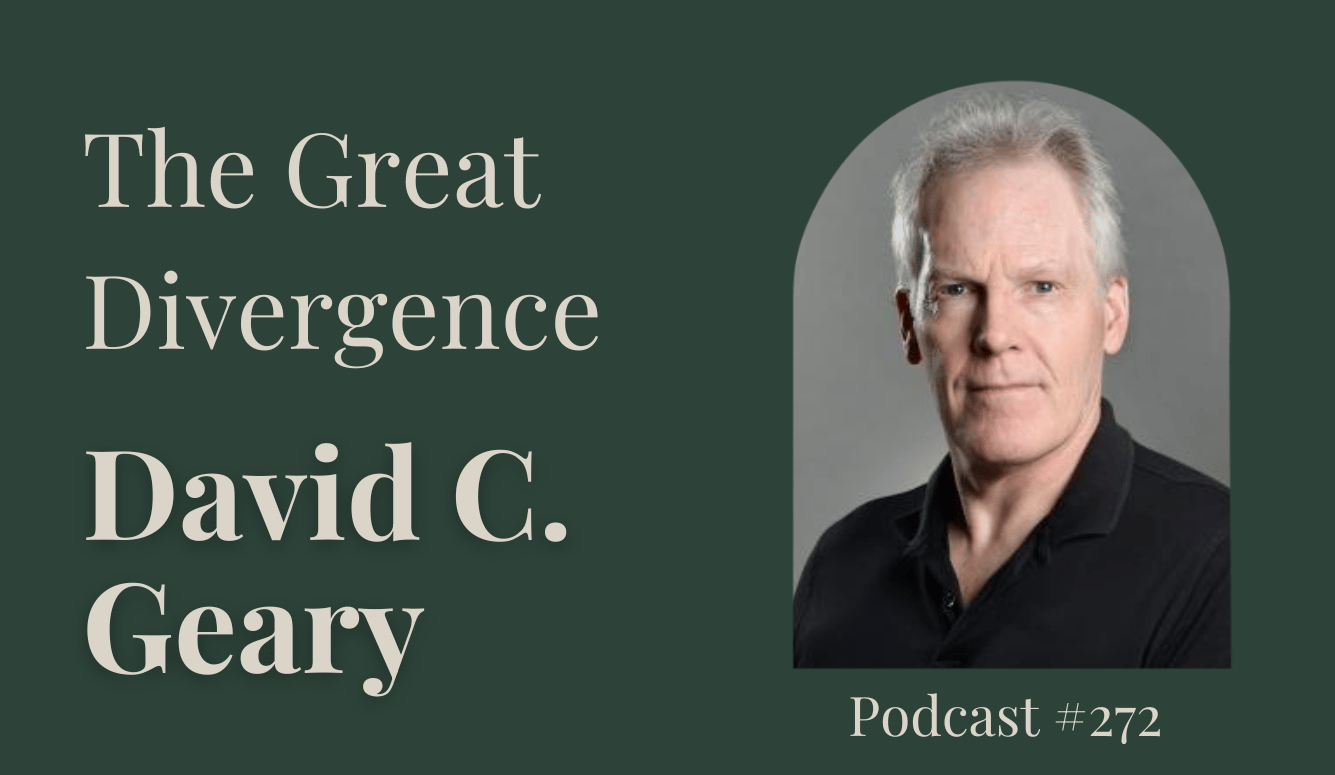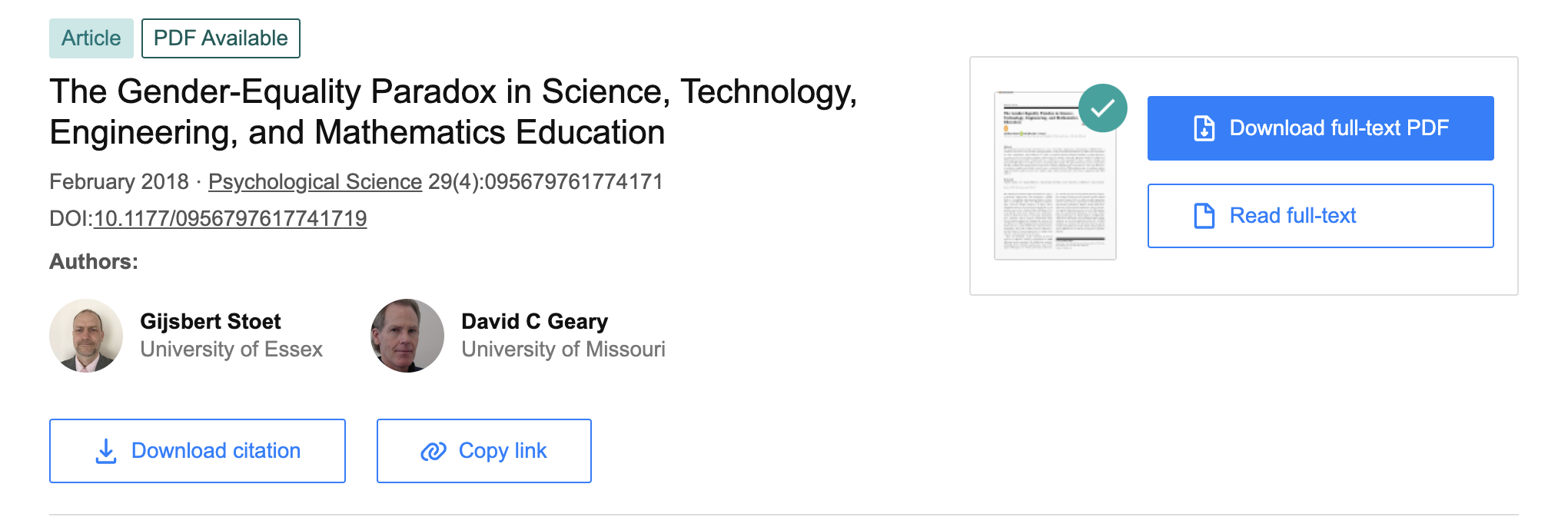Podcast
Podcast #272: The Great Divergence
Iona Italia talks to evolutionary psychologist David C. Geary about why he believes evolved differences between the sexes have been growing more salient in western societies.

Introduction: My guest this week is David C. Geary. David is a Curators’ Distinguished Professor in the Department of Psychological Sciences and the Interdisciplinary Neuroscience Program at the University of Missouri.
I’ll be talking to him about why he believes evolved differences between the sexes have been growing and becoming more salient in Western societies, a theory explained in a Quillette article he co-authored with Lewis G. Halsey entitled “The Great Divergence.” I hope you enjoy our conversation.

Iona Italia: In your co-authored piece, “The Great Divergence,” you talk about not only the clear average differences between men and women in psychology, behaviour, preferences, etc., but also that these differences are expanding. Could you start by talking about why the differences would be growing?
David C. Geary: In the ’70s, ’80s, and ’90s, the assumption among social psychologists and sociologists was that, as societies became more gender-equal, with women entering the workplace, education, politics, and so forth, many psychological and behavioural sex differences would shrink. They thought we would become more similar over time, at least in gender-equal Western countries.
But what’s emerged over the last twenty years or so is that many psychological, behavioural sex differences and preferences are actually becoming larger as countries become more egalitarian, wealthier, and healthier. This is the exact opposite of what was expected if sex differences were simply due to stereotypes or social norms and expectations. Not all differences are getting larger, but enough of them are to make it a really interesting phenomenon.
II: And why are they getting larger? What’s the mechanism behind that increase?
DCG: We don’t know for sure, but part of it is likely a loosening of social mores and an expansion of social niches and occupational niches. For example, we now have hundreds of television channels versus three in the ’60s in the US. A lot of underlying individual differences and sex differences in various areas were probably unexpressed several generations ago because the opportunities to express those differences weren’t there.
Girls and women typically do better on what’s called episodic memory—memory for personal experiences—verbal memory, short-term, and long-term memory. If you give them a list of words to remember and ask them to recall it a few minutes later, they perform better. Or if you ask how quickly they can generate names of plants, girls and women generally do better in those areas.
Boys and men generally do better in visual-spatial tasks like navigating from one place to another or generating and manipulating visual images. What’s really interesting is that these differences are smaller in populations living in difficult conditions—those with higher disease burden and relatively poor nutrition. As we move from these stressed populations to more developed regions with healthier populations, the sex differences in both areas expand, but in different directions. Women’s memory and verbal advantages get bigger, and men’s visual-spatial advantages also increase.
II: That’s fascinating. Do you have any theories about what the evolutionary reasons for that might be?
DCG: I’ve been interested in sex-specific vulnerabilities for about fifteen years and wrote a book about it about ten years ago. The basic idea comes from Darwin’s sexual selection, which involves competition for mates and mate choices. These dynamics usually result in the exaggeration of certain traits related to competition and choice in one sex versus the other.
Take the peacock’s train, for example. It can be five feet long, much bigger in males than females, and is one of the larger traits in males relative to other male traits. This is sexually selected, driven largely by female choice—the females prefer the big, colourful trains and the mating dance the males do.
What’s important is that these traits come at a cost. For those traits to be fully developed, the males must be very healthy. The environment has to provide adequate nutrition and resources, with low levels of parasites, or the male must at least be resistant to parasites, without too many social stressors. When you add stressors, parasite loads, or nutritional problems, these sexually selected traits are disproportionately compromised. They’re more vulnerable—the train size will be more strongly affected than overall body size, for instance.
This sensitivity to environmental conditions prevents cheating. Less fit males can’t bluff other males because they can’t actually grow these big features without being in good shape. They can’t trick females easily because females are sensitive to the size of the plumage and other features.
II: Yes, so there’s a trade-off between survival and sexual fitness.
DCG: Right. If you’re sickly or don’t have enough food, the calories and resources will go into the immune system and keeping you alive rather than into these sexually selected traits. That gives you the option of trying again during the next breeding season.
II: If I understand correctly about expanded possibilities leading to a greater divergence in male and female preferences—in the past, there were very few women in the workforce, so it wasn’t as easy to see which jobs women gravitated towards because few of them were working and many professions were barred to women. We didn’t have a sense of how many women would have chosen those professions if there was no bar. But now there isn’t a bar, so we can actually get a more honest sense of the relative preferences.
DCG: Right. My colleague, Gijsbert Stoet, and I published a paper in PLOS One in 2022 on adolescent occupational preferences in about eighty countries, studying about 500,000 adolescents, and compared that to other large-scale studies from about 100 years ago. A hundred years ago in Western nations, the occupational options for women were restricted, as you said. They often went into nursing or teaching or some kind of stereotypical profession.

Now we see that women who are interested in science, technology, engineering, and mathematics—women who are good at maths and science—they still go into nursing somewhat, but they’re much more likely to go into medicine now than they were 100 years ago. However, they’re not more likely to show preferences for inorganic fields like becoming a mechanic or an engineer, computer science, or working with non-living things. So we see some of the same differences there, but they’re more clear now. And in many cases, they still fit the stereotypes.
II: Yes, I saw the stats for the UK recently—I think I’m remembering this correctly—that there are now more female medical school graduates than male. So women who are choosing to go into high-level professions are obviously choosing some professions that are very demanding and have a high bar for entry, like medicine. So the reason why women aren’t going into engineering is probably not because it’s demanding or has a high bar for entry—it’s that we don’t want to go into engineering. Not as many of us want to be engineers.
DCG: Right. Same in the US, where the number of women in medical school is now more than 50 percent, not by a lot, but a bit more. A hundred years ago, it was almost all men. Now it’s moving toward being a female-majority profession. That’s already happened in veterinary medicine, where 80–90 percent of new vets are women—dealing with living things. And these are women who are smart enough and have the science and maths skills necessary to go into engineering or computer science if they chose to do so. But they’re not choosing to do so. The percentage of women in those domains, at least in the US, has been pretty flat for the last thirty years or so.
II: On the one hand, clearly it’s advantageous for people to be able to follow their preferences. So it’s actually good if we see more women in professions that women actually prefer and more men in professions that men prefer. That’s what we should expect to see and also hope to see because it means the maximum number of people are pursuing the things they want to pursue. But do you feel there have also been some disadvantages to this divergence? Some fields have remained very masculine and other fields have been extremely feminised, such as many areas in academe. I have some concerns about that, especially about the increasing educational gap between women and men.
DCG: I have some concerns about that as well. One of the issues, independent of preferences, that probably has occurred or will occur is that when a field is predominantly male-occupied or predominantly female-occupied, it probably discourages members of the opposite sex from entering those fields—not necessarily due to any type of prejudice or stereotyping, but men and women have different ways of relating to one another, of communicating with one another, joking around with one another. These are differences that start at three years of age and just get bigger over time.






